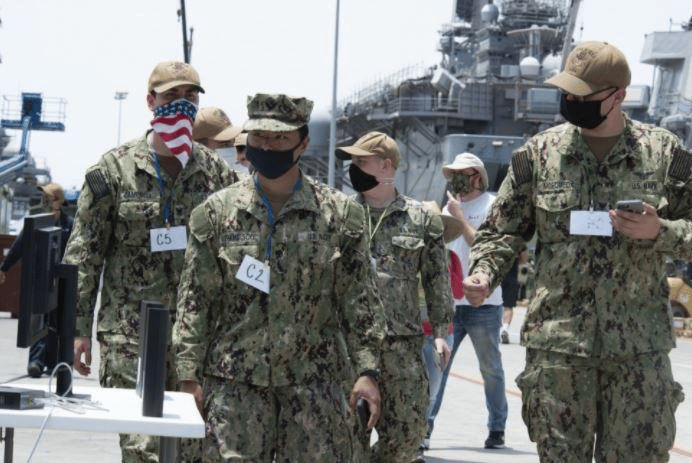
As part of our work on the DARPA Brandeis program, we participated in the US Navy’s Trident Warrior exercises in 2019 and 2020, to test our technology in ten application scenarios grounded in real-world Navy eventualities. Five were identified as “mission critical” scenarios that require immediate alerting and response, and the remaining five were “non-mission critical” scenarios to provide planning and performance metrics for use in training and evaluation. Some example scenarios included privacy-preserving activity monitoring to understand sailor activity and movement within a ship, and leveraging mobile hardware for detection of man-overboard falls or onboard falls down stairs or shafts. Our portion of the overall system developed under the Brandeis program performed well in each of the scenarios designed by the Navy and the Naval Information Warfare Center (NIWC) to test it.
As a result of this success, Navy leadership selected the system to be tested for their COVID-19 mitigation strategies (pictured here). The testing and demonstration of the Brandeis system was conducted in two parts, on June 27 and July 6, 2020, at Naval Base San Diego. The following scenarios were tested:
- Contact Tracing
- Hotspot Exploration
- Social Distancing
- Quarantine and Restricted Access to Infected Areas App.
All web apps were developed for desktops, laptops, or large tablets, including data-generator apps for sailors’ mobile and wearable devices, and data-consumer apps for medical personnel’s laptops and tablets.
This work was supported by DARPA and NIWC Pacific under Contract No. N66001-15-C-4065, Distribution Statement A: “Approved for Public Release, Distribution Unlimited. If you have any questions, please contact the Public Release Center”. The views, opinions and/or findings expressed are those of the author and should not be interpreted as representing the official views or policies of the Department of Defense or the U.S. Government.
